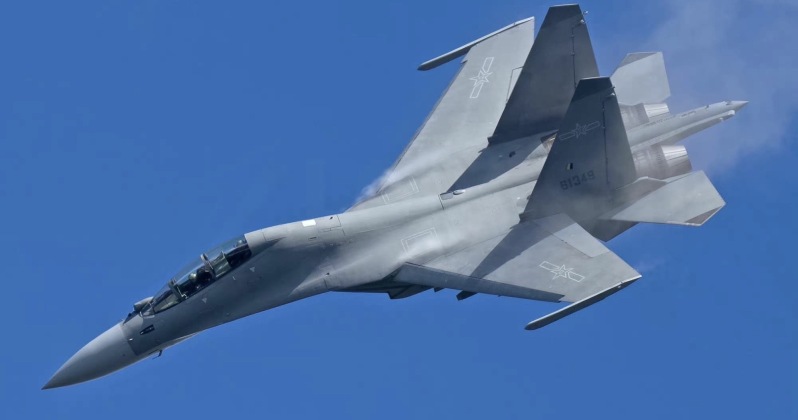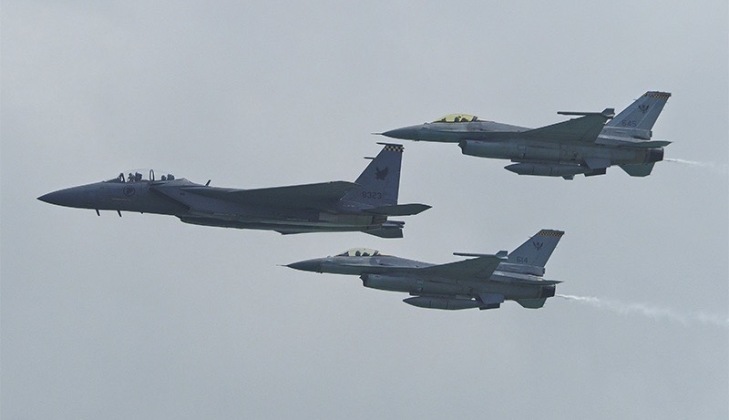News
Revelation From 2022: China’s Air Force Has More Heavyweight Fighters Than NATO and Russia Combined

The year 2022 was one of the most eventful for military affairs since the end of the Cold War, not only due to the outbreak of a full scale war between Russia and Ukraine, the latter with very extensive support and large personnel contributions from across the NATO alliance, but also due to parallel developments across the world perhaps most notably in East Asia. The Chinese People’s Liberation Army (PLA) has continued to cement its position as a fully peer level competitor to the United States Military – a position which Russia is fast losing in many areas of its conventional capabilities. Although Western attentions have been heavily focused on engaging Russian forces in Eastern Europe, Sino-U.S. and broader Sino-NATO tensions have remained significant with the U.S. gaining more support from Japan and Australia, and to much a lesser extent from a new administration in South Korea, in its efforts to sustain Western dominance in East Asia. Significant new information has come to light on both China and the United States’ developments of the world’s first sixth generation fighter jets, with American officials continuing to raise concerns regarding the rival Chinese program. Both countries increasingly appear in a league entirely of their own in terms of the combat aircraft they field, and they remain the only ones to field full strength fifth generation fighter squadrons and to be developing next generation stealth bombers which are also expected to enter service near simultaneously. Behind the two industry leaders, Russia has for the first time deployed serial production fifth generation fighters for combat while South Korea flew its own fifth generation fighter for the first time in July, making it the fourth country to do so and coming as the country cemented itself as a world leading arms exporter with tens of billions of dollars in sales to NATO states.
While China and the United States remain neck to neck in their competition for a qualitative advantage in combat aviation, as well as in which can bring new systems into service sooner, new details on the Chinese fleet revealed in 2022 shed considerable light on its tremendous industrial and quantitative advantages. Currently all the fighters in production on the largest scales in the world, aside from the American F-35, are being built in China, which include two classes of heavyweight the J-20 and J-16. While China has long been known to field a much larger proportion of heavyweight fighters in its fleet than the U.S. or any U.S. aligned country, with the partial exception of Saudi Arabia, the Zhuhai 2022 Airshow revealed that China’s fleet of heavyweights very likely surpasses not only that of the United States, but those of NATO and Russia combined. China is estimated to field approximately 300 J-16 and over 200 J-20 fighters, alongside older models including close to 350 J-11s, 50 carrier based J-15s, 98 Russian supplied Su-30s and 24 Russian Su-35s. A small number of older Russian supplied Su-27s are also thought to still be in service. China is thus estimated to field between 1000 and 1100 heavyweight fighters – which excluding heavyweight interceptors and strike fighters represents a fleet larger than those of any two other countries combined.

The United States Military is estimated to field approximately 510 heavyweight fighters, only around a dozen of which are new F-15EX jets. The remainder are Cold War era F-15 models, the last of which was acquired in 2001, as well as approximately 185 F-22s which are set to begin retirement in 2023. The F-22s, although using fifth generation airframes like the J-20, are still reliant on 1990s avionics pending a possible future upgrade. Outside the U.S. Air Force, no heavyweight fighters are in service anywhere in the Western world. The only Western heavyweight fighters to enter service, the F-14, F-15 and F-22, are not fielded by NATO members outside the United States. Although widely considered by clients such as Britain, Germany and France, the need to protect domestic industry in Europe, the high cost of America’s top end fighters, and the lack of feasible European heavyweight fighter programs, meant such aircraft were not fielded widely in NATO. Although France’s Dassault began work on a heavyweight equivalent to the F-15, the Mirage 4000, the aircraft never entered production due to its high cost and limited prospects for export sales. Thus production of heavyweights has been restricted to the United States, China and Russia, with such aircraft forming the large majority of Russian fighter units but still being relatively few in numbers due to the limited size of the country’s defence budget. Russia is estimated to field approximately 400 heavyweight fighters, including approximately 110-130 each of the Su-35, Su-30SM/SM2 and the Soviet era Su-27. Approximately 20 carrier based Su-33s are also in service – a navalised derivative of the Su-27, as well as an estimated six Su-57 fifth generation fighters. The combined Russian and NATO heavyweight fighter fleets are thus significantly outnumbered by that of China, which is a phenomenon made all the more significant by the fact that Chinese heavyweights are not only decades newer on average than those in the United States, but also that they have consistently shown themselves to be more sophisticated than those in Russia.

Heavyweight fighters for the elite of the worlds’ leading air forces today, and benefit not only from the ability to carry far more weapons and in most cases from the best flight performances, but also from far longer ranges and the ability to carry much larger and thus more powerful sensor suites than medium or lightweight jets. Heavyweights are relied on heavily for air superiority, strike and maritime strike roles with capabilities far surpassing their equivalents from lower weight ranges, although their much higher costs both to operate and to manufacture mean that they have generally been fielded in more limited number. The United States Air Force, for example, developed the F-16 single engine lightweight fighter to fill out the bulk of its units after the much more capable F-15, which entered service from 1975, was found to be entirely unaffordable for widespread deployments. Investment in the F-15 was nevertheless seen as vital, as top and medium end Soviet fighters such as the MiG-25 and MiG-29 were seen to have significant performance advantages over the F-16. For the United States or its allies, the lack of meaningful fleets of heavyweights remains a significant issue – one recent consequence of which was the withdrawal of a four decade permanent F-15 stationing in Okinawa without replacement announced in October as there was no direct successor to the F-15 seen as capable of taking over the role. With the U.S. having cut plans to acquire its last two heavyweights in production, the troubled F-22 and the cost effective but non stealthy F-15EX, its ability to dominate future air wars will rest heavily on its NGAD sixth generation air superiority fighter currently under development. With the NGAD revealed in May to be expected to cost hundreds of millions of dollars per airframe, however, the F-15 and F-22’s successor is if anything expected to be even more outnumbered.












